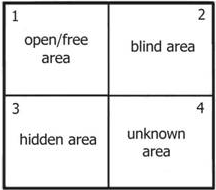THE DELICATE LINK
WRITTEN BY: ADAM CHAN
The link between two parties is probably the vital artery of the organization and yet it can be as delicate as a strand of hair
One of the unique traits of FOCUS Adventure is the love-hate relationship between facilitators and project managers. The link between the two parties is probably the vital artery of the organization and yet it can be as delicate as a strand of hair.

Invariably, the project managers are made up of female partners and facilitators are male partners. This trend has remained
consistent to FOCUS Adventure for many growing years. This trend will always be unique to FOCUS Adventure and to some external parties; it may be a point of contention. It seems like this arrangement potentially carries the seeds to future conflicts when FOCUS Adventure recruit more partners. However, conflicts are not necessary undesirable. We know that Bruce Tuckman’s team developmental model contains the Storming stage a.k.a. conflicts. This clearly suggests that conflicts are necessary for team development. Just because FOCUS Adventure preaches teambuilding as the core business does not mean conflicts are not present. We will be in self denial to think otherwise. Therefore, FOCUS Adventure views this unique arrangement as an opportunity instead of an obstacle.
What keeps a team intact?

In any performing team, there will be agreements and arguments. As much as we need oxygen to stay alive, this stuff we breathe in also breakdown any elements in the world e.g. rusty irons, moldy bread, decomposition, combustion, etc. it deteriorates our life span gradually and yet we need it as the basic element ingredients to survival. Isn’t this ironic? We can think of As we became familiar with FOCUS
Adventure, we became comfortable. What
comes after the forming stage is storming.
In any organization, it is made up of work units and it is usually organized into generic functions, departments or unique project groups. The nature of such grouping fosters team identity. Inadvertently it also creates underlying assumptions towards each other. These assumptions can be general or specific. The assumptions gave rise to tension among the work units. Tension can mean conflicts among the work units. The healthy tension moves resources to achieve goals whereas the toxic ones will diminish productivity.
What keeps a team intact is therefore not only how frequent they agree but also how competent they handle arguments.
Faci-Phobia
Do project managers hesitate when tagging certain facilitators? At the extreme, some may totally avoid tagging the not preferred facilitator. At the basic level, this is what Faci-Phobia is. It may be good news to the particular facilitator but it is detrimental to the organization.
Commonly, we know that facilitator tagging practice is based on competency. Project managers will usually try to match the clients’ needs to the competency of the facilitator. Just like the Johari Windows, this information is in the open quadrant (to read about Johari Windows, scroll down to the Annex A).

In general, Phobia is an anxiety disorder characterized by extreme and irrational fear of simple things or social situations
We may wonder is competency the only condition being considered. Could there be other hidden conditions? In Johari Windows, third quadrant points to the “hidden” space within everyone. It is unlikely that facilitator tagging is based on competency alone. So what is it that makes the project managers hesitate when tagging certain facilitators?
After all, project managers’ performance are measured is by numbers. Huge numbers may not necessary reflect quality but small numbers are by no means desirable too.
What gave them Faci-Phobia?
The obvious reason for hesitating in tagging a particular facilitator is fear. Fear by itself doesn’t make a lot of sense. Let’s build some context around fear; project managers are directly answerable for shoddy programs even if the damage is created by the facilitators. Even we understand the success or failure of a program is a shared responsibility but the project managers face the heat directly whereas the facilitators are buffered from such situations. A shoddy program can mean difficulty in receiving payments from the clients. Reading nasty
complaining emails and being put in the inevitable situation to make responses induces the most potent headache. Setting up a service recovery meeting reluctantly plus gripped by worries the never the welcoming part for anyone. Last but not least, shoddy programs are likely to terminate any future dealings with the affected clients. The above illustrations should adequately elaborate the context of fear herein. Hence, when a project manager hesitated to tag, it is likely due to the mentioned fear. Over time, repeated exposure to the same fear will lead to the infamous Faci-Phobia.

So far, the situations described are due to the direct contacts between clients and facilitators. They are largely connected to the competency of the facilitators. Another important contact point is between the facilitators and project managers. This takes place frequently and it is easy to take it for granted. Occasionally, this contact operates base on some underlying assumptions which often lead to points of contention. Commonly, these are critical pre-program information regarding a particular program. E.g. check-in time, program venue, clients’ special needs, objective emphasis, time coordination, etc. In the event of disputes, facilitators and project managers take reference from a tangible asset; the O.P.T.I.O.N.S form. Does every facilitator read the useful information painstakingly captured by the project managers? This is surely an area where things are being taken granted for. Not making sufficient effort to be informed give opportunities to assumptions to take over, so much so when the assumptions were treated as facts from time to time. Consequently, unwarranted tension sets in and the blaming game begins. This will reinforce development of the Faci-Phobia.
Post programs woes are not uncommon too. There are some routine tasks to perform as part of post program follow up to close the loop. Sometimes clients may make additional requests to be met. Usually when things are not followed up, the project managers will receive “gentle reminders” from the clients. This is where opportunities to augment or diminish facilitators-project managers’ relationships were created. Making the right decision builds whereas taking the easy way destroys. Any facilitator who committed to any task to any project manager but failed in delivering will strain the relationship. This may sound like a motherhood statement but the reality is most people only recognized it as the cause for the strained relationship. In fact the act of not delivering the commitment does little harm to the relationship. What really erases the credibility of any facilitator regardless his experiences and competency is the failure to acknowledge the oversight. The harsh reality is the possibility for the involved facilitator to shift the oversight buck to others. This will make the strain irreversibly; etched deeply in any project manager. Consequently, the Faci-Phobia gets confirmed.
Reliability

In summary, there are only two states to any interpersonal relationship, i.e. good or bad. Clearly the feeling of good and bad can be felt by the involved parties easily even people don’t verbalize them. What make it bad then? What are some unwanted behaviors that will drive the project managers to the wall? Since the frequent contacts between facilitators and project managers create tensions, it would be worthwhile to identify the trivial yet highly repetitive contacts that offer opportunities for such behaviors to breed. What can the project managers do about it? They can decide to address the unwanted behaviors or avoid the predicament all together.
When we need to make decisions, we can choose the right way or the easy way. Commitment will drive us to the right way but compliance will likely lead to the easy way. Confidence gives right whereas fear makes wrong. At the fundamental level, the facilitator tagging practice is about making decision. Once decided, the outcome will be shifted into the open quadrant of the Johari Windows. However, what goes into the decision is only known to the decision makers and sometimes the decision makers can even be oblivious because our sub conscious mind can profoundly influence the eventual outcome.
Regardless of pre-program preparation, program delivery or post program activities, all these work processes are fundamentally contact points between the facilitators and project managers, this delicate link is valuable as well as vulnerable. With a blink, the credibility of any facilitator can be easily lost. In reality, project managers don’t usually verbalize their preferences when tagging facilitators because it may be too complicated to elaborate to any facilitator without causing misunderstanding. Moreover, with the pace of things in FOCUS Adventure it is never conducive for such conversations to take place during the peak hours. At the end of the day, project managers will instinctively prefer to tag facilitators whom they deem reliable.
What goes into reliability? It is as simple as doing what was promised. Small well-meaning and consistent gestures go a long way in building reliability into the relationship. Exercising sensitivity to each other feelings during the contacts requires no monumental effort. Exhibiting respectful behaviors towards each other is as common as common sense to everyone. Although these are small behavioral efforts but it will give great mileage to the facilitators’ reliability. Most project managers may not demand top notched quality for every
program from the facilitators but they sure don’t expect to be left hanging to dry, all alone. By simply keeping to what was committed, the facilitators will certainly make good deposits into the emotional bank accounts of the project managers. In a nutshell, don’t “fly-aeroplane” the project managers.
Will facilitators develop PM-Phobia too? It is suffice to say that reliability is what facilitators look for in the project managers as well. Assuredly, facilitators will suffer from such phobia too.
Annex A
Johari Window
Johari Windows is a communication model that can be used to improve understanding between individuals within a team or in a group setting. Based on disclosure, selfdisclosure and feedback, the Johari Window can also be used to improve a group’s relationship with other groups.
Developed by Joseph Luft and Harry Ingham (the word “Johari” comes from Joseph Luft and Harry Ingham), there are two key ideas behind the tool:
- That individuals can build trust between themselves by disclosing information about themselves; and
2. That they can learn about themselves and come to terms with personal issues with the help of feedback from others.
By explaining the idea of the Johari Window to your team, you can help team members understand the value of self-disclosure, and gently encourage people to give and accept feedback. Done sensitively, this can help people build more-trusting relationships with one another, solve issues and work more effectively as a team.
Concept of Johari Windows
The Johari Window model consists of a foursquare grid. This is shown in the diagram below,

Using the Johari
model, each person is represented by their own four-quadrant, or four-pane,
window. Each of these contains and represents personal information – feelings,
motivation, etc. – about the person, and shows whether the information is known
or not known by themselves or other people.
The 1st quadrant – The
open/free area is where information to known to everyone. It is useful to share
information especially from the learning and developmental point of view.
The 2nd quadrant – The
blind area is like any driver’s blind spot. The subject will not know about it
until there is feedback bringing this blinded information into the open area.
The 3rd quadrant – The
hidden area is only known to the subject but not others. Commonly when people
rise to occasions, making remarkable achievements by exhibiting latent talents
only known to the subject himself.
The 4th quadrant – The
unknown area is any information that is still undiscovered. It can be viewed as
potential.


